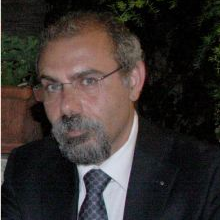Topic Menu
► Topic MenuTopic Editors




Sustainability and Universities: Their Contribution to Reach the 17th SDGs
Topic Information
Dear Colleagues,
The role of universities is not limited to teaching and research, but also extends to the whole of society, through the dissemination of the results of their research and the awareness of public opinion on specific issues, to which the university can make its own scientific and cultural contribution. One of the most pertinent current issues is the environmental sustainability of any university that provides important help, taking into account their role towards students and the community. This occurs, for example, in teaching activities, such as providing degree programs, masters, etc., on sustainability; in research activity, encouraging projects in the environmental sector, preferably following a multidisciplinary approach; and in the dissemination of research and awareness, organizing conferences, congresses, etc., on specific environmental issues. Universities also have an impact as a consumer of goods and services (energy, water, paper, etc.) and as a waste producer, and should endeavour to reduce their environmental impact. In the latter case, in order to carry out their activities, universities occupy spaces, are consumers of water and energy, are important consumers of paper and office equipment; manage catering activities, generate waste, waste water, and air emissions. Universities and their structures can be examples of sustainability, if they implement sustainability policies during the course of these listed activities. In recent decades, universities have organized a series of initiatives and declarations on this topic. Some national and international institutions have also presented papers on the role of environmental education in higher education. The purpose of this Topic is to collect information on initiatives, scientific studies, and the dissemination of culture and good practices of sustainability, both inside and outside the universities, in addition to the positive impacts in environmental, ethical, social, and economic terms following the actions implemented. The studies published in this Topic can be a valuable guide for those who study these topics, but also for universities that want to collect useful information to implement actions to spread the culture of sustainability and to improve their social and environmental performance.
Prof. Dr. Giuseppe Ioppolo
Dr. Giulio Mario Cappelletti
Prof. Dr. Luca Grilli
Dr. Carlo Russo
Topic Editors
Keywords
- sustainability
- the sustainable development goals (SDGs) and universities
- university rankings
- environmental and social reporting
- environmental education
- sustainable mobility
Participating Journals
| Journal Name | Impact Factor | CiteScore | Launched Year | First Decision (median) | APC |
|---|---|---|---|---|---|

Education Sciences
|
3.0 | 4.0 | 2011 | 24.9 Days | CHF 1800 |

Environments
|
3.7 | 5.9 | 2014 | 23.7 Days | CHF 1800 |

Social Sciences
|
1.7 | 3.2 | 2012 | 27.7 Days | CHF 1800 |

Sustainability
|
3.9 | 5.8 | 2009 | 18.8 Days | CHF 2400 |

MDPI Topics is cooperating with Preprints.org and has built a direct connection between MDPI journals and Preprints.org. Authors are encouraged to enjoy the benefits by posting a preprint at Preprints.org prior to publication:
- Immediately share your ideas ahead of publication and establish your research priority;
- Protect your idea from being stolen with this time-stamped preprint article;
- Enhance the exposure and impact of your research;
- Receive feedback from your peers in advance;
- Have it indexed in Web of Science (Preprint Citation Index), Google Scholar, Crossref, SHARE, PrePubMed, Scilit and Europe PMC.

